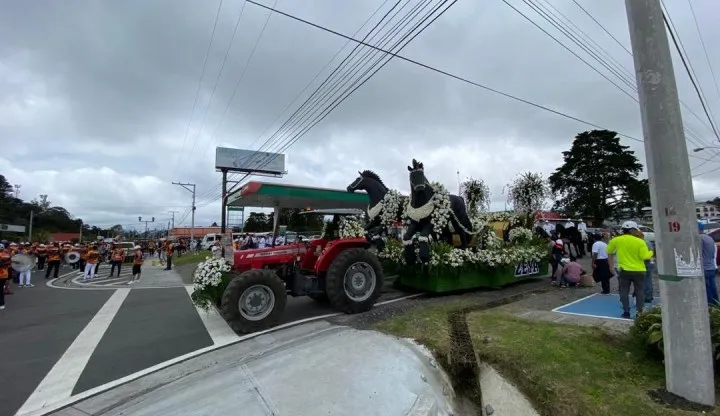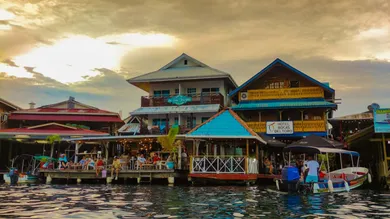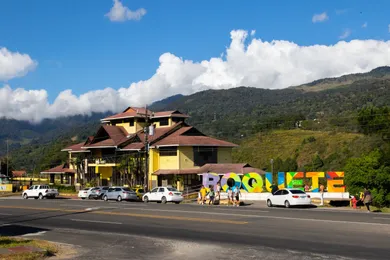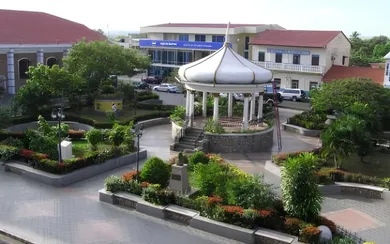
Panama City: Panamas historic and welcoming capital city
Panama City is beautiful, modern and captivating. This is the reason why in 2023 thousands of retirees chose this city as their retirement destination.
Volcan Panama is a small mountain town in Chiriqui Panama. Because of the altitude the climate in Volcan is cool and pleasant all year round.

What is so attractive about a place like Volcan?
This is probably the question you are asking yourself right now. The answer is simple: the town of Volcan is located at the foot of the Volcan Baru, the tallest mountain in Panama.
The town of Volcan is home to a very diverse community: Panamanians, retired foreigners, expats, as well as a healthy flow of national and international tourists who appreciate the natural beauty of the place.
In this article, we aim to explore the unique allure of this Panamanian region, which remains irresistibly charming in the shadow of Volcan Baru. Don’t be afraid, and just enjoy the trip with us to the town of Volcan!
This region of Panama has a rich history. The ancient indigenous communities that inhabited the area were the ones who decided to name the volcano: Baru. In their language this word meant house or mountain of fire, alluding to volcanic eruptions.
On July 1, 2017, the town of Volcan was recognized as a township and was separated from the district of Bugaba and was included instead the Tierras Altas’s district.
This area is also known for its pleasant and temperate climate almost all year round. It has a very fertile volcanic soil that favors the coffee plantations, strawberries, citrus fruits, flowers and the livestock as well. Fun fact up to 95% of the vegetables consumed by Panamanians are produced in this area of the country.
The Volcan Baru rises 3474 meters (11,398 ft) above sea level; while the altitude of the town varies between 1,300 and 1,500 meters (4,265 and 4921 ft) above sea level.
The flora and fauna of the region are impressive for their beauty and variety in the small town as well as in the parks and nature reserves.
The Volcan Baru National Park belongs to the township of Volcan and is a protected area by the government of Panama due to its great historical, environmental and touristic value. Since its inauguration in June 1976, this government-protected sanctuary has been drawing visitors from across the globe, eager to experience its majestic beauty.
With an extension of 14,322 hectares and its highest point at 3474 meters (11,398 ft), the park surprises travelers with its natural beauty and abundant vegetation.
This indescribable place offers the opportunity to hike its many trails in search of memorable images. By the way, hiking the trails of La Nevera or El Quetzal allows you to see different types of large trees and enjoy the incredible view of the tropical rainforest.
The diversity of flora and fauna surrounding the park is amazing. More than 250 species of birds live there, some are endemic, such as the colorful toucan or the amazing quetzal. In addition to all kinds of flowers and plants, from orchids to mosses.
In the National Park it is also possible to experience white water rafting and canoeing.

The Volcan Baru is one of the main natural attractions of the park. Many visitors go there to visit the highest volcano in southern Central America. If we choose to hike, the ascent takes an average of 4 hours; on the other hand, if we opt for a means of transportation that can traverse the rugged and steep road, then the approximate duration will be 30 minutes.
Reaching the summit offers a unique spectacle: the rare opportunity to simultaneously behold the majestic Pacific and Atlantic Oceans. Many visitors opt for an early morning ascent, a decision that rewards them with the breathtaking experience of watching the sunrise from this Panamas highest peak. It’s truly an awe-inspiring sight.
Volcan Baru is an active volcano, yet its most recent activity is recorded back in 600 AD. While it remains dormant, we can hope that it continues its slumber, sparing us from witnessing an eruption in our lifetime.
Adjacent to the town of Volcán lies the La Amistad International Park, commonly referred to by its Spanish acronym PILA. This unique park spans across both Panamanian and Costa Rican territories, symbolically uniting the two nations. The name of the park, translating to ‘Friendship International Park,’ aptly reflects this cross-border harmony.
Both countries are responsible for it’s and administration. In 1983, UNESCO recognized its global significance by designating it a World Heritage Site. Since then, it has emerged as a symbol of peace, marking its status as one of the few such sites in the world.
With an area of more than 600,000 hectares, many areas of the park are inaccessible and a mystery. But the areas that remain open to the public are extraordinarily beautiful, teeming with an abundance of natural wildlife.
This natural environment, protected by the authorities, is home to 3,000 species of plants, 600 species of birds, more than 300 amphibians and reptiles, and 120 species of fish. Orchid lovers can see a total of 600 varieties of orchids in a single day.
Three indigenous communities coexist in this important place, which take advantage of the territory to preserve their traditions. Due to the excellent products of the region, the district of Tierras Altas (to which Volcan belongs) has a very wide gastronomic richness. Which is reflected in several of the typical dishes, but especially in the production of Geisha Coffee, the most expensive in the world and rated by many as the best.
The town of Volcan is an excellent destination, either to visit once or to settle there. The cost of living is low and there are great possibilities to invest, but above all to enjoy a quiet life close to natural beauty. Volcan has attractions that scare away fears and among its trails are hidden a myriad of wonders.

Panama City is beautiful, modern and captivating. This is the reason why in 2023 thousands of retirees chose this city as their retirement destination.

Bocas del Toro is Panamas slice of Caribbean heaven, offering a plethora of activities, accommodations, dining, and real estate opportunities.

Boquete, in the green mountains of Chiriqui is quiet, unspoiled, uncrowded, with tumbling rivers and waterfalls. Plus an it has ideal year-round climate.

Experience the enchanting town of Chitre on Panama's Azuero Peninsula, where colonial charm meets modern conveniences.